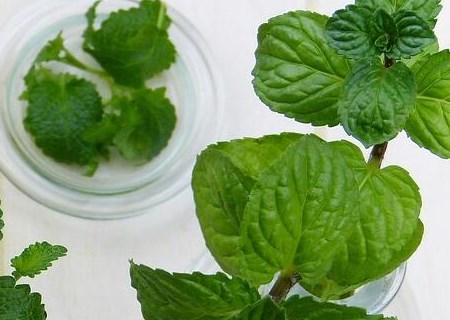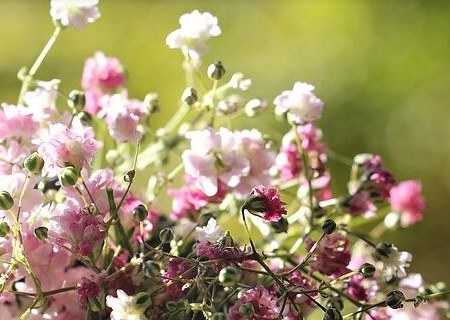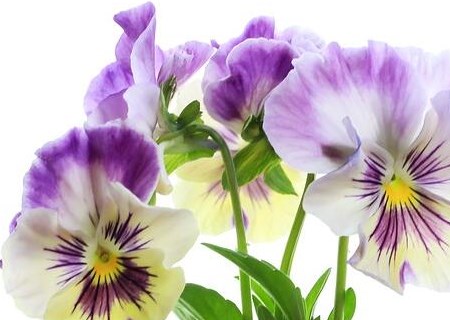What are the planting methods of Yindan peppermint seed? What are the prospects? What are the effects and effects?
Peppermint, called "Yindan grass", is a plant of Labiatae, which is a kind of aromatic crop with special economic value. Peppermint is one of the commonly used traditional Chinese medicines in China. What do you know about how to plant mint seeds? What are the prospects? What are the effects and effects? It is a cool antipyretic for sweating, treating influenza, headache, red eyes, body heat, throat, gums and other diseases. External use can treat neuralgia, skin itching, rash and eczema. Usually replace tea with peppermint, clear heart and clear eyes. In China, the production of peppermint is mainly in Jiangsu and Anhui provinces.

I. the planting method of peppermint
1. Accelerating budding
(1) the requirement of accelerating germination of peppermint seeds is to keep it moist and not to let too much water, so under normal circumstances, if only a little water is put in, it will dry quickly. Mint germination is usually best at 30 degrees under the condition of high temperature.
(2) first prepare cold boiled water, the water temperature is about 40 degrees, then pour in the peppermint seeds, let the peppermint seeds soak in it for 5 hours, the water temperature does not require constant temperature, just let the water cool naturally.
(3) after the peppermint seeds are soaked, begin to cut the mineral water bottle, cut out part, cut out part is cylindrical, about 5 cm high, then put the cylindrical part on the plate, then cover the top of the cylinder with a piece of tissue paper, the tissue paper can hang to the bottom of the plate, pour the peppermint seeds on the tissue paper in the middle of the circle, and then cover with a layer of tissue paper. Then add water to the plate. The water will be sucked up by the tissue and keep the tissue moist, without making the tissue too wet due to gravity.
Accelerating germination of peppermint seeds
2. Sowing seeds
The main results are as follows: (1) sowing time: it is suitable to be planted in autumn and winter, that is, from late October to late November in the south of China, and from March to April in the north.
(2) sowing method:
Generally speaking, for larger seeds (such as lavender and sage), you can order 2-3 seeds in each container. Leave a stronger one after germination depending on the growth of the seedlings. Small seeds (such as Mayoram) can be sown. Touch some seeds with your hands and sprinkle them gently on the soil. The seedlings sprouted after germination. Leave 1-3 seedlings as appropriate.
The thickness of seed cover depends on the size of the seed. It is generally 2-3 times the diameter of the seed. The soil of small seeds is thinner, and the soil of large seeds can be thicker. Some seeds have strong phototaxis and can not be covered with soil (such as vanilla, Rosemary).
Water thoroughly after sowing. A fine spray can is used for watering. Don't push hard so as not to wash the seeds away. It is best to use the sitting basin method, that is, use a large basin to hold 3 basins of water, and sit the container in the basin. Let the water seep in through the bottom hole of the container. The water level in the large basin should not exceed the height of the soil in the container. After sowing, the container should be covered with plastic wrap, and several small holes should be pierced in the plastic film to breathe. Put the container in the sun and keep the temperature about 20 degrees. Most seeds can germinate after a week.
3. Post-germination management
After the seeds germinate, you can take off the cling film. If the seed is small, you can take it off until the seedling is a little stronger.
Peppermint seeds germinated.
4. Pot transplanting
After the seedlings grow out of 4 or 6 true leaves, they can be put on the pot. You need to use a small basin at the beginning. Wait for the seedling to grow up, and then replace the big basin as appropriate. When changing the basin, wait until the soil is dry (because it should be watered after changing the basin, if the soil is wet, the wet time is too long, and the seedlings are easy to grow poorly). First, add more than half of the fertile soil to the small basin. In order not to destroy the root system, there is no need to shake off the soil near the root when transplanting. Move it directly into a small basin and fill the soil with the roots. Be sure to water thoroughly and shade for a few days after transplantation. And then you can put it in the sun and take care of it.
What are the prospects for growing mint?
Analysis of yield per mu and economic benefits (for your reference only, not as a basis for investment)
Mint can be harvested three times a year. The yield is 200 kilograms per mu. Mint tree, in full bloom, cut off the whole mint root with a sickle, dry it and sell it. It can be harvested twice a year with a yield of 500 kilograms per mu. Mint can be harvested twice a year. The yield is 20 kilograms per mu.
Output value per mu:
Leaf: 200Kg × 10000yuan; tree: 500Kg × 3000yuan; seed root: 1000Kg × 3000yuan; total: 6500 yuan.
Cost accounting: seed stem: 60Kg × 4000RMB; fertilizer: 50Kg × 21400 yuan; machine tillage: 20 yuan
Labor: 60 yuan; pesticide: 10 yuan. Total: 430 yuan.
Net profit: 6500, 430,000, 6070 yuan.
Third, what are the effects and functions
1. Edible function
Peppermint has both medical and edible functions, the main edible parts are stems and leaves, and can also be used for juice extraction. In edible, peppermint can be used as seasoning, spice, wine, tea and so on. Every 100 grams of dry mint contains 9.6 grams of moisture, 6.8 grams of protein and 31.1 grams of fiber, providing 870.7 kilojoules of calories.
Peppermint food
Such as: peppermint porridge, efficacy: fresh and refreshing, soothing wind and heat, increase appetite, help digestion.
Peppermint tofu, efficacy: can treat cold stuffy nose, sneezing, runny nose and other diseases.
Mint shredded chicken, efficacy: relieve fire and relieve summer heat.
Peppermint cake, efficacy: cool, dispel wind and heat, clear throat.
Fresh mint crucian carp soup, efficacy: can treat children with chronic cough.
Peppermint soup, efficacy: detoxification and dispelling fire.
Peppermint herbal tea makes you feel comfortable and energetic after drinking it.
In addition, peppermint stems and leaves have a special fragrance, which can be used to make chewing gum and toothpaste to refresh and relieve fire.
In addition, peppermint can brew honey, its honey color is dark, deep amber, with a strong peppermint special smell.
2. Medicinal efficacy
Peppermint is a commonly used traditional Chinese medicine in China. The tender stem tip can be used as vegetable food, and the whole herb can be used as medicine to treat cold, fever, throat pain, headache, eye pain, muscle pain, skin rubella scratching, measles impermeable and other diseases. in addition, it is also effective for carbuncle, gangrene, scabies, ringworm and lacquer sore.
Peppermint contains menthol, which can refresh breath and has a variety of medicinal properties, can relieve abdominal pain, gallbladder problems such as spasm, antiseptic, diuretic, expectorant, stomach and digestive functions. Eating large amounts of peppermint can lead to insomnia, but small doses can help you sleep.
Time: 2019-03-18 Click:
- Prev

What are the seed planting methods that girls like? When is it suitable for planting? How many colors do you have?
All over the sky, Caryophyllaceae and Caryophyllum are perennial herbs. Roots and stems can be used medicinally. The cultivation is available for viewing. Do you know the seed planting methods that girls like? When is it suitable for planting? How many colors do you have? The flower words of the stars are: willing to be a supporting role of love, only willing to be by your side
- Next

What are the seed planting methods of perennial herb pansy? When will it be planted? And Corydalis and Corydalis
Tricolor pansy is a perennial herb, each flower usually has purple, white, yellow tricolor, hence the name pansy. Tricolor oysters are suitable for open-air planting, regardless of flower beds, gardens and potted plants. Do you know what are the seed planting methods of pansy? When will it be planted? What is the difference between Corydalis and Corydalis?
Related
- Fuxing push coffee new agricultural production and marketing class: lack of small-scale processing plants
- Jujube rice field leisure farm deep ploughing Yilan for five years to create a space for organic food and play
- Nongyu Farm-A trial of organic papaya for brave women with advanced technology
- Four points for attention in the prevention and control of diseases and insect pests of edible fungi
- How to add nutrient solution to Edible Fungi
- Is there any good way to control edible fungus mites?
- Open Inoculation Technology of Edible Fungi
- Is there any clever way to use fertilizer for edible fungus in winter?
- What agents are used to kill the pathogens of edible fungi in the mushroom shed?
- Rapid drying of Edible Fungi

